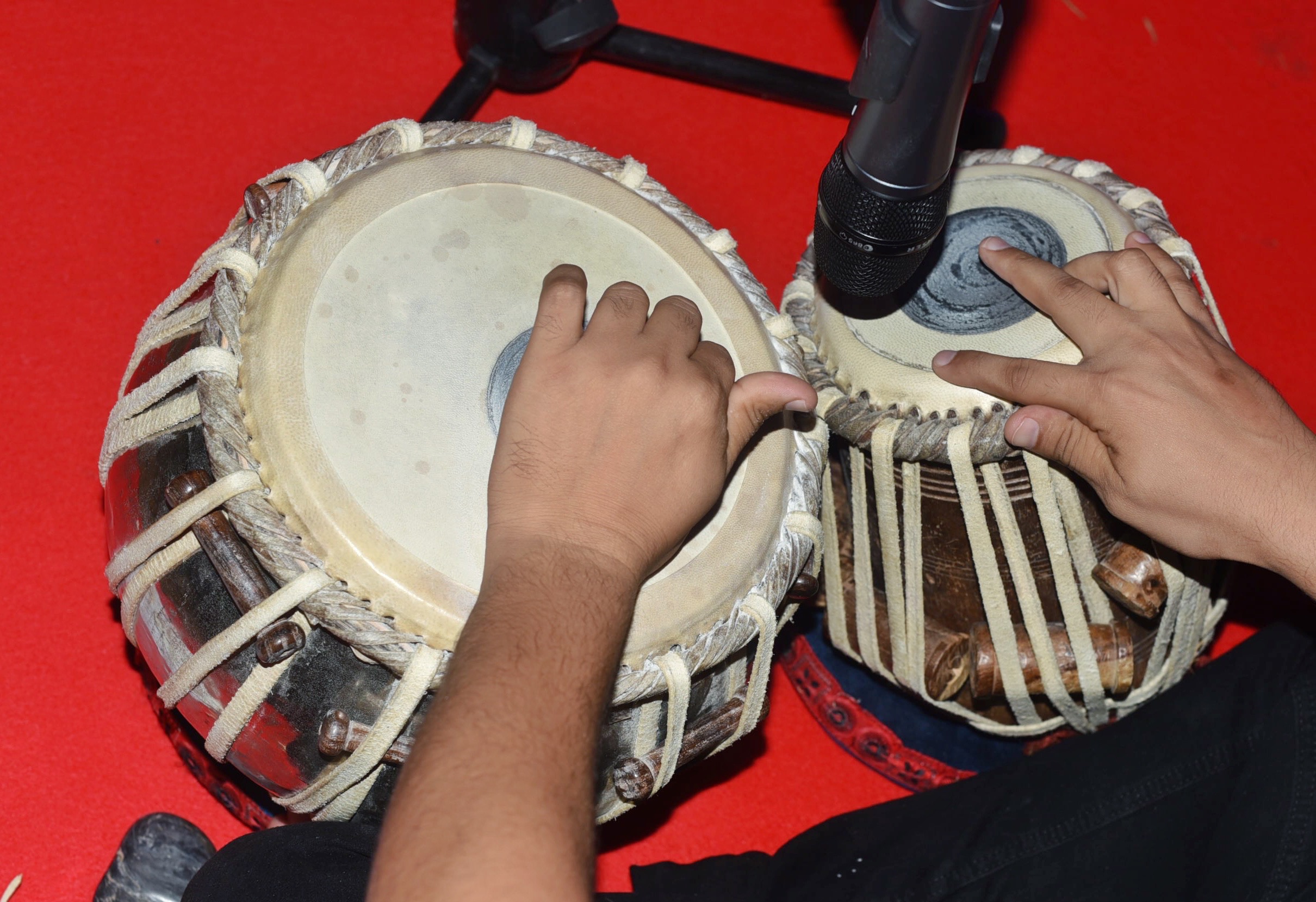Tabla is an instrument that came into being in the Indian subcontinent; it is similar to drums, popularly used at traditional events as well as latest fusion events, in the presence of many people. Even today, it is considered a significant instrument in Hindustani music from the 18th century – and the best part is, it continues being used in countries like India, Nepal, Sri Lanka, Bangladesh etc.
The method involved in playing the Tabla is not as easy as you think it is; it involves putting the fingers and palms to use in different angles, resulting in different sounds and rhythms. In typical Hindustani music style, the tabla is played in two ways: band bol (band baaz) and khula bol (khula baaz). The word ‘tabla’ has been derived from ‘tabl’, a Persian and Arabic word for ‘drum’. At Chinmaya Vishwavidyapeeth, Deemed to be University, there is a two-year programme being offered for those interested in specialising in playing the instrument and making a career out of it.
Eligibility for the programme
It is important for students to have at least 50% of marks in any bachelor’s degree from a reputed university. If the aspiring student has cleared exams/certifications in music, it could prove to be hugely beneficial. In order for a candidate to be selected, he/she will need to be a part of an audition. Also, if you’re an undergraduate in Music, you will be given preference first. Candidates of any age are applicable for this programme.
Programme courses
Akshara Sadhana
To be perfect in playing the Tabla, the sound of every akshara is important – this does justice to a composition. With Nikaas, you learn how to place your hand and the intonation of the sound is another critical aspect when playing the instrument. The course is an exhaustive combination of bols from all Gharanas. The better you get at the production of sound, it improves the thought process and this allows you to get better at it.
Taal Sadhana
Taal, which happens to be one of the important pillars of music, is part and parcel of playing the Tabla. Taal has to come from within the player. It is a practice that has more to do with the psychological aspect that influences the playing and aesthetics when it comes to the rhythm. The study includes taals, their rhythmical structure, personalities and smooth flow of enhancement within their structure, without the nuances of the taal being affected.
Music Theory
With music theory, you get an in-depth understanding of concepts, terminologies and thought process in classical music. The courses include applied theory, Gandharva Vidya, music education, cultural musicology and research methodology, along with a few courses too. To get perfect in your practical skills, it’s important to focus on writing compositions and ‘laykaris’.
Job scope
With a Master’s programme in Tabla, you will be eligible to represent a government/private university as a professional tabla lecturer with remuneration that’s per government standards. Plus, if your interests lie beyond teaching, you can become a performing artist and give individual performances and saath-sangat for vocalists, instrumentalists and kathak. Also, you can make a business out of your talent – perhaps, start your own music academy?

